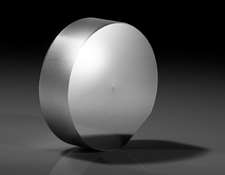Edmund Optics utilise des cookies pouroptimiser et améliorer les fonctionnalités et le contenu de notre site Web.Cliquez sur « OK » pour une expérience utilisateur complète. Vouspouvez obtenir des informations supplémentaires sur les cookies que nous utilisonsen cliquant sur le bouton « Détails ». Nous ne vendons PAS vosdonnées provenant des cookies marketing, nous les utilisons UNIQUEMENT pouraméliorer VOTRE expérience avec Edmund Optics.
- Les cookies nécessaires contribuent à rendre un site web utilisable en activant des fonctions de base comme la navigation de page et l'accès aux zones sécurisées du site web. Le site web ne peut pas fonctionner correctement sans ces cookies.
- Cloudflare1En savoir plus sur ce fournisseur__cf_bmCe cookie est utilisé pour distinguer les humains des robots. Ceci est bénéfique pour le site web afin de créer des rapports valides sur l'utilisation du leur site.
- edmundoptics.fr1QuoteIDEnregistre l'identifiant de votre panier de devis.
- www.edmundoptics.fr1CookieConsentStocke l'autorisation d'utilisation de cookies pour le domaine actuel par l'utilisateur
- Cloudflare
- Les cookies de préférences permettent à un site web de retenir des informations qui modifient la manière dont le site se comporte ou s’affiche, comme votre langue préférée ou la région dans laquelle vous vous situez.
- edmundoptics.fr1chatEngagedIndique si l'utilisateur a interagi avec la boîte de discussion du site web afin de déterminer s'il doit recevoir des invitations à la discussion.
- edmundoptics.fr
- Les cookies statistiques aident les propriétaires du site web, par la collecte et la communication d'informations de manière anonyme, à comprendre comment les visiteurs interagissent avec les sites web.
- edmundoptics.fr2ce_diff_timeUtilisé par Crazy Egg pour compenser le temps à des fins d'analyse.ce_ip_addressUtilisé par Crazy Egg pour stocker l'adresse IP de l'utilisateur.
- edmundoptics.fr
- Les cookies marketing sont utilisés pour effectuer le suivi des visiteurs au travers des sites web. Le but est d'afficher des publicités qui sont pertinentes et intéressantes pour l'utilisateur individuel et donc plus précieuses pour les éditeurs et annonceurs tiers.
- edmundoptics.fr6_gaexpCe cookie est utilisé par Google Analytics pour déterminer si le visiteur est impliqué dans ses expériences de marketing.gwccPermet les Google Website Call Conversions - Cela enregistre si le visiteur a cliqué sur « Téléphone » dans la sous-page « Contactez-nous ». Ces informations sont utilisées à des fins de statistique et de marketing.mPixel de suivi utilisé par une société sud-coréenne, Naver Analytics, pour suivre l'engagement sur des sites webNWBUtilisé par une société sud-coréenne, Naver Analytics, pour l'analyse du web qui suit et rapporte le trafic sur le siteNWB_LEGACYUtilisé par une société sud-coréenne, Naver Analytics, pour l'analyse du web qui suit et rapporte le trafic sur le sitewcs_btUtilisé par une société sud-coréenne, Naver Analytics, pour l'analyse web intersites
- edmundoptics.fr
- Les cookies non classés sont les cookies qui sont en cours de classification, ainsi que les fournisseurs de cookies individuels.
Nous n'utilisons pas de cookies de ce type.
La loi stipule que nous ne pouvons stocker des cookies sur votre appareil que s’ils sont strictement nécessaires au fonctionnement de ce site. Pour tous les autres types de cookies, nous avons besoin de votre permission.
Ce site utilise différents types de cookies. Certains cookies sont placés par les services tiers qui apparaissent sur nos pages.
À tout moment, vous pouvez modifier ou retirer votre consentement dès la Déclaration relative aux cookies sur notre site web.
En savoir plus sur qui nous sommes, comment vous pouvez nous contacter et comment nous traitons les données personnelles veuillez voir notre Politique confidentialité.
Veuillez indiquer l'identifiant de votre consentement et la date à laquelle vous nous avez contactés concernant votre consentement.

















ou consulter les numéros d’autres pays
facile à utiliser
entrer les numéros de stock pour commencer
Copyright 2023 | Edmund Optics, Ltd Unit 1, Opus Avenue, Nether Poppleton, York, YO26 6BL, UK
L'entreprise Edmund Optics GmbH en Allemagne agit comme un mandataire d'Edmund Optics Ltd au Royaume-Uni. Le titulaire du contrat est Edmund Optics Ltd au Royaume-Uni.